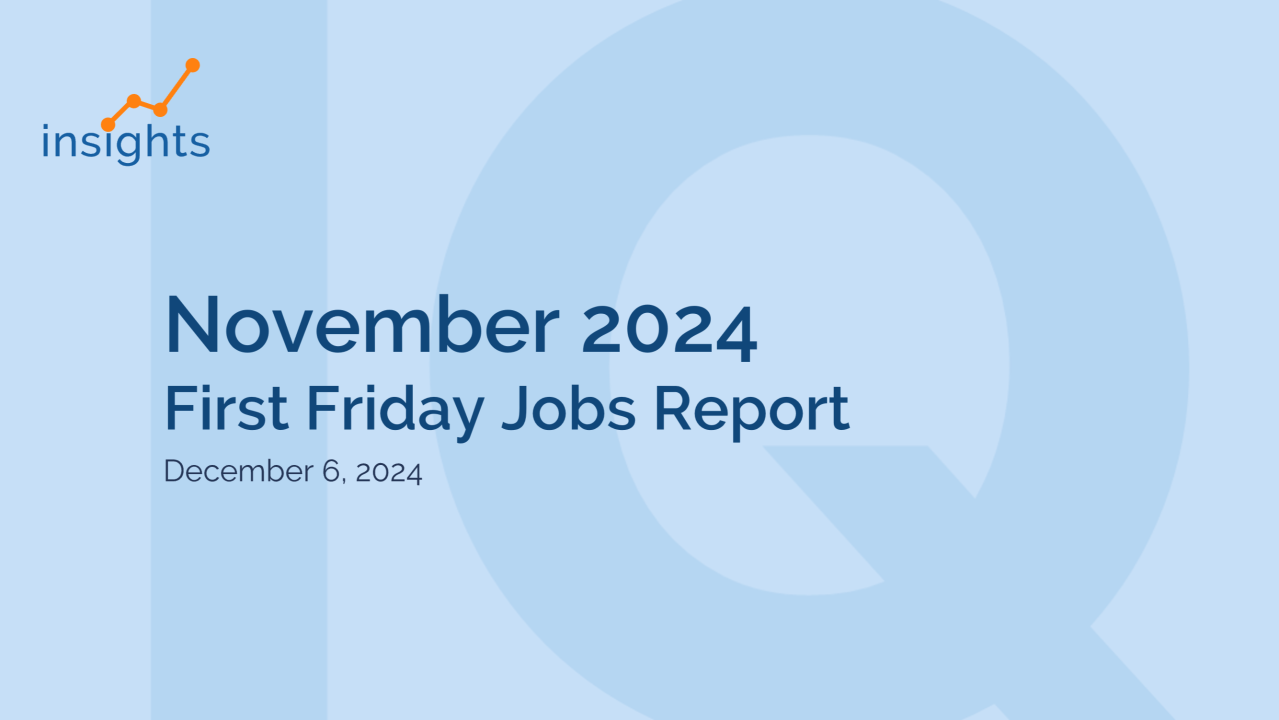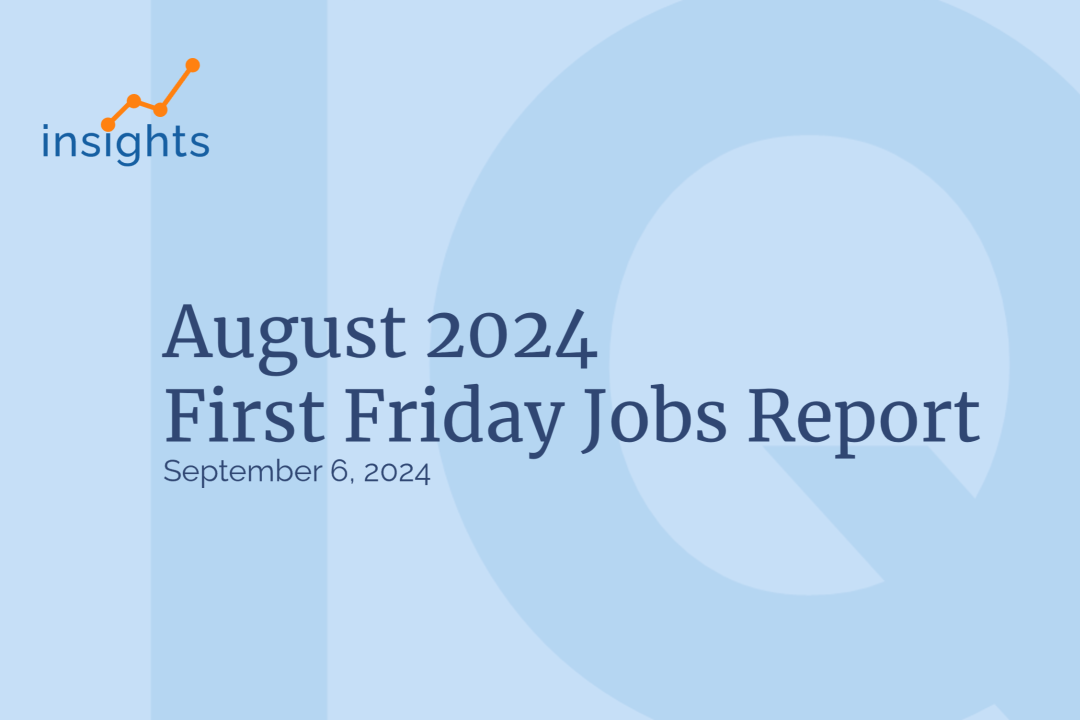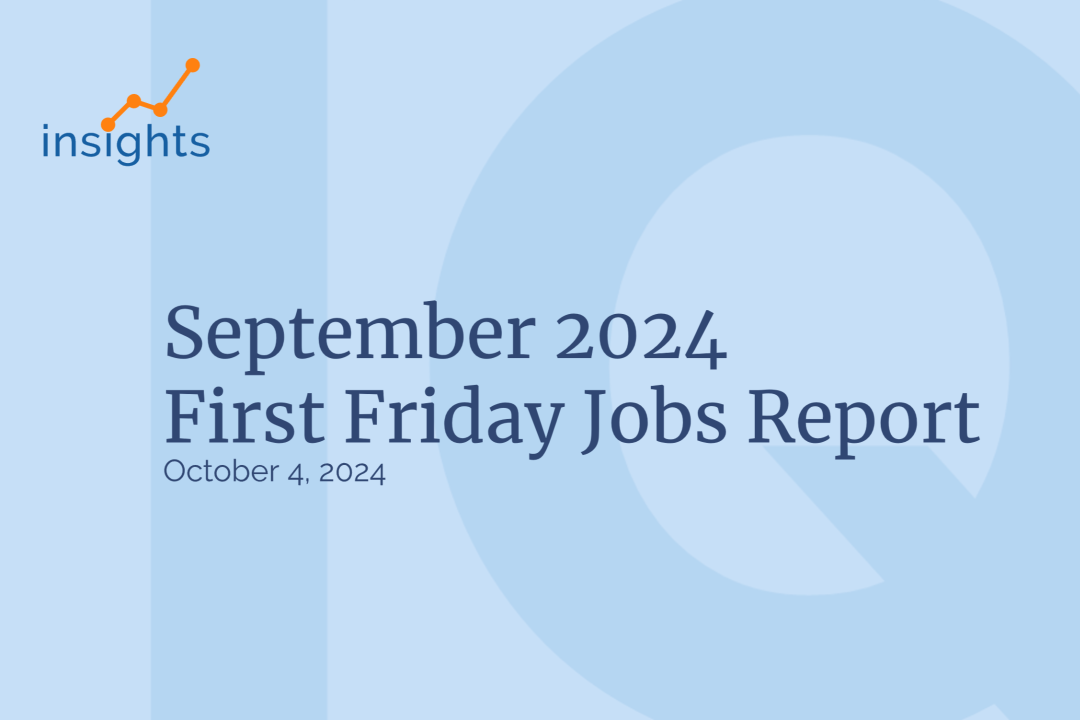This week, we break down the latest “First Friday” jobs report. Hiring rebounded substantially in November, largely due to the recoveries from Hurricanes Milton and Helene and the resolution of the Boeing strike.
U.S. businesses added 227,000 jobs in November, above expectations of around 200,000. The unemployment rate ticked up to 4.2%, and wages grew by 4% over the past 12 months.

The labor market is certainly cooling and has continued the trend of more modest growth.
In addition to a solid headline number, another bright spot in November’s jobs report was revisions to September and October’s hiring totals. Job gains for the past two months were revised upward by a combined 56,000 jobs, following last month’s downward revision of 112,000.
Given we are in a period of stabilization and cooling in the labor market, expect to see monthly swings in revisions as the labor market continues to recalibrate. Don’t be overly alarmed or excited about these shifts.
💡 What’s behind the stronger November report?
Essentially, it was a correction from October’s noisy report. Last month, we cautioned against reading too much into the weak report and predicted a strong November as strikes and hurricanes contributed to substantial work stoppages.
In early November, more than 30,000 Boeing employees, members of the International Association of Machinists and Aerospace Workers union, returned to work contributing to 32,000 new jobs added in the transportation equipment manufacturing industry. Work absences due to weather also dropped substantially in November to 62,000, compared to the 512,000 weather-related absences in October.
🎁 Holiday Hiring
In an otherwise robust jobs report, the retail trade sector was a notable weak spot, shedding 28,000 jobs in November on a seasonally adjusted basis. General merchandise retailers, which includes a variety of retailers from department and clothing stores to warehouse clubs and gas stations, accounted for 15,000 of the retail jobs lost. For context, general merchandise retailers employ nearly 3.3 million workers in the U.S. and employment in the industry is near record highs.
We might expect a bump in retail employment due to holiday hiring, but it’s not quite that simple. Looking at non-seasonally adjusted data, retail overall added more than 280,000 jobs and general merchandise retailers added around 117,000 jobs. Those numbers are consistent with headlines around holiday hiring plans from major retailers.
So why does the seasonally adjusted number show a loss? Seasonal adjustments are meant to smooth out seasonal patterns and month-to-month fluctuations and make it easier to observe trends. While businesses are hiring during the holidays to meet demand, they are hiring fewer seasonal workers, relying more on extra hours from full-time employees. This is a trend we’ve seen since the pandemic. There’s still a shortage of talent across many sectors, and workers may prefer the security of a full-time.
📊 Job gains | Cooling but on a stable trajectory
Hiring totals surpassed expectations in November with a robust 227,000 net job gains. However, the labor market continues to cool. Over the past six months, we’ve averaged around 143,000 jobs added each month, consistent with a stable but not rapidly growing labor market.
🏥 Industries | A few sectors continue to dominate
Once again three industries – government (+33,000), healthcare (+54,000), and leisure and hospitality (+53,00) – accounted for nearly two-thirds of all new jobs added.
Another bright spot was professional and business services, which added 26,000 jobs last month, making up for 23,000 jobs lost in October. Job gains in professional and business services were widespread. The good news for recruiters is that the employment services subsector added 6,800 jobs in October, following months of job losses.
💼 Unemployment rate | Ticking up
The unemployment rate edged up to 4.2% from 4.1% in October. Layoffs and unemployment insurance claims have not increased substantially. The unemployment rate has risen from 3.7% in January 2024. As hiring has slowed throughout the year, it’s become harder for those workers who are laid off to find new work.
💸 Wages and compensation | Good news for workers, more planning for businesses
Wages grew by 4% over the 12 months ending in November. This marks three straight months of 4% annual wage growth. Inflation ticked down to 2.2% year-over-year, presenting strong real wage gains if the pattern continues. Wage growth is not coming down as quickly as many expected, and there are major implications for compensation and talent retention strategies.
For businesses, even in industries that may be sluggish right now, it's important not to lose focus on compensation and talent retention.








.jpg)
